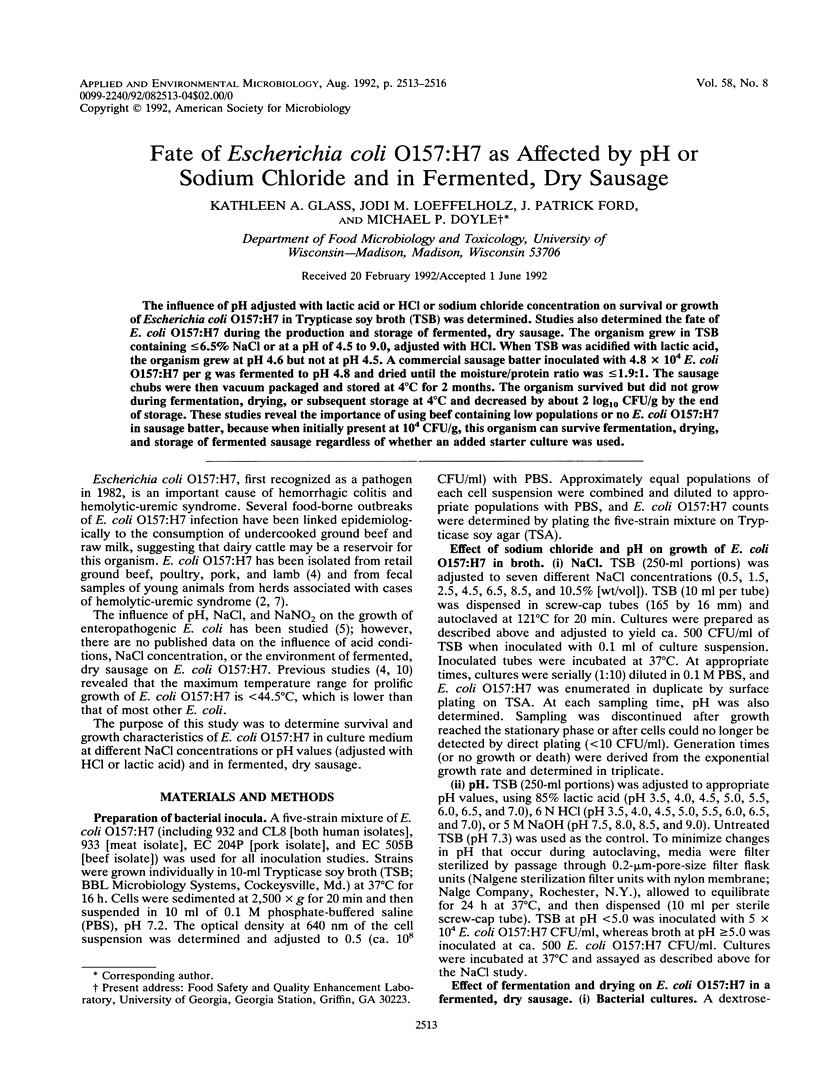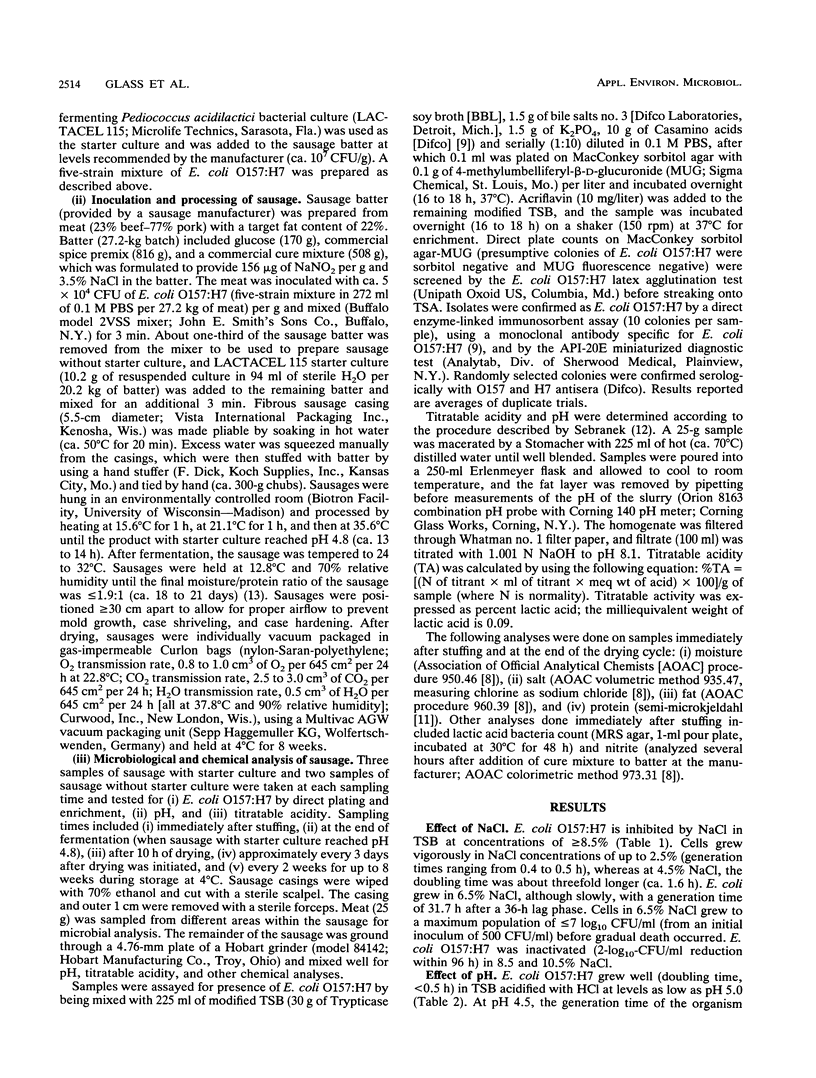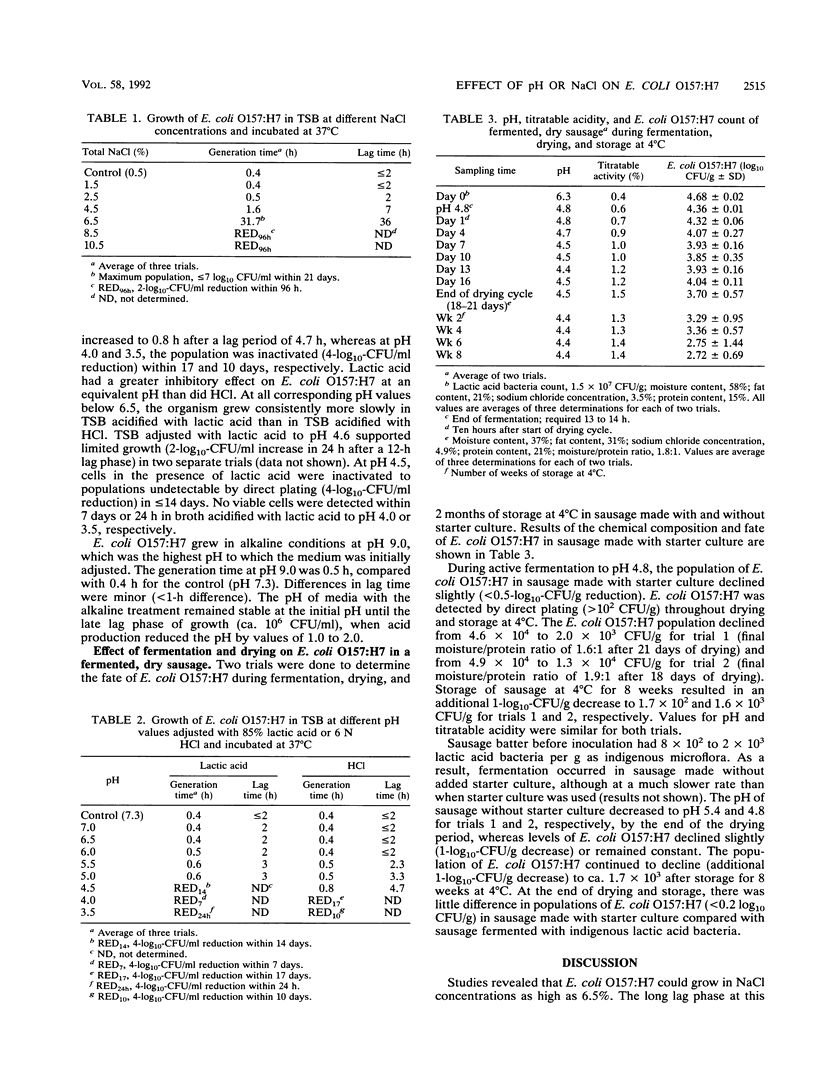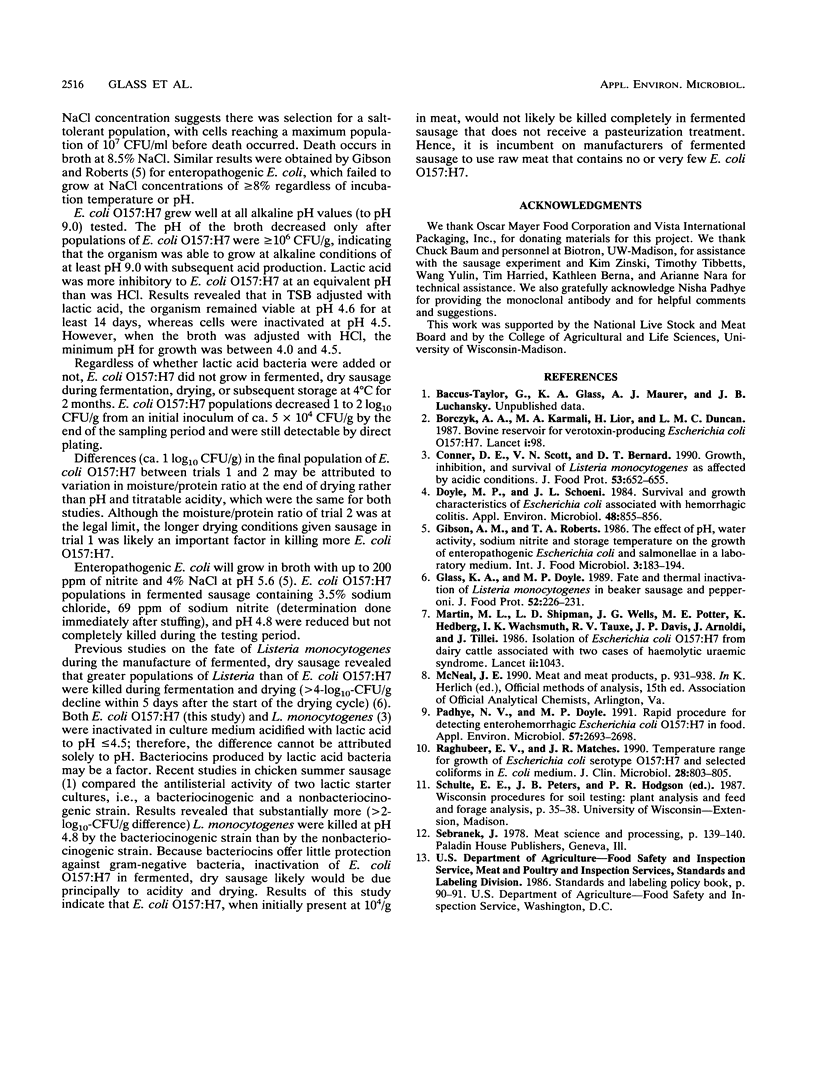Abstract
The influence of pH adjusted with lactic acid or HCl or sodium chloride concentration on survival or growth of Escherichia coli O157:H7 in Trypticase soy broth (TSB) was determined. Studies also determined the fate of E. coli O157:H7 during the production and storage of fermented, dry sausage. The organism grew in TSB containing less than or equal to 6.5% NaCl or at a pH of 4.5 to 9.0, adjusted with HCl. When TSB was acidified with lactic acid, the organism grew at pH 4.6 but not at pH 4.5. A commercial sausage batter inoculated with 4.8 x 10(4) E. coli O157:H7 per g was fermented to pH 4.8 and dried until the moisture/protein ratio was less than or equal to 1.9:1. The sausage chubs were then vacuum packaged and stored at 4 degrees C for 2 months. The organism survived but did not grow during fermentation, drying, or subsequent storage at 4 degrees C and decreased by about 2 log10 CFU/g by the end of storage. These studies reveal the importance of using beef containing low populations or no E. coli O157:H7 in sausage batter, because when initially present at 10(4) CFU/g, this organism can survive fermentation, drying, and storage of fermented sausage regardless of whether an added starter culture was used.
Full text
PDF



Selected References
These references are in PubMed. This may not be the complete list of references from this article.
- Borczyk A. A., Karmali M. A., Lior H., Duncan L. M. Bovine reservoir for verotoxin-producing Escherichia coli O157:H7. Lancet. 1987 Jan 10;1(8524):98–98. doi: 10.1016/s0140-6736(87)91928-3. [DOI] [PubMed] [Google Scholar]
- Doyle M. P., Schoeni J. L. Survival and growth characteristics of Escherichia coli associated with hemorrhagic colitis. Appl Environ Microbiol. 1984 Oct;48(4):855–856. doi: 10.1128/aem.48.4.855-856.1984. [DOI] [PMC free article] [PubMed] [Google Scholar]
- Martin M. L., Shipman L. D., Wells J. G., Potter M. E., Hedberg K., Wachsmuth I. K., Tauxe R. V., Davis J. P., Arnoldi J., Tilleli J. Isolation of Escherichia coli O157:H7 from dairy cattle associated with two cases of haemolytic uraemic syndrome. Lancet. 1986 Nov 1;2(8514):1043–1043. doi: 10.1016/s0140-6736(86)92656-5. [DOI] [PubMed] [Google Scholar]
- Padhye N. V., Doyle M. P. Rapid procedure for detecting enterohemorrhagic Escherichia coli O157:H7 in food. Appl Environ Microbiol. 1991 Sep;57(9):2693–2698. doi: 10.1128/aem.57.9.2693-2698.1991. [DOI] [PMC free article] [PubMed] [Google Scholar]
- Raghubeer E. V., Matches J. R. Temperature range for growth of Escherichia coli serotype O157:H7 and selected coliforms in E. coli medium. J Clin Microbiol. 1990 Apr;28(4):803–805. doi: 10.1128/jcm.28.4.803-805.1990. [DOI] [PMC free article] [PubMed] [Google Scholar]


